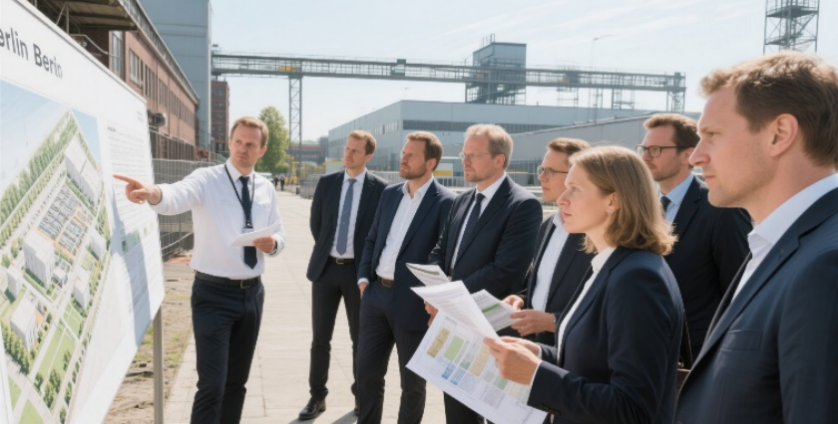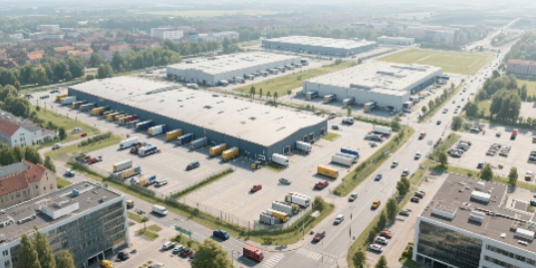
The Berlin-Brandenburg region has emerged as a European logistics powerhouse, driven by Amazon’s sprawling hubs and a supply-demand imbalance that has propelled warehouse rents by 15% annually. With vacancy rates plunging to 2.1% (JLL, 2025), this market offers a compelling blend of e-commerce tailwinds, policy support, and structural scarcity—all converging to create unique investment opportunities. Here’s how to navigate its growth story with a focus on coherence and strategic insight.
The Making of a Logistics Hotspot
Berlin-Brandenburg’s rise is no accident. Its central European location, seamless connectivity via the A10 motorway, Berlin Brandenburg Airport (BER), and dense rail networks position it as a critical node for pan-European distribution. E-commerce giants, led by Amazon’s massive fulfillment centers, have turbocharged demand for modern, scalable warehouse space capable of handling same-day delivery logistics. Yet supply has failed to keep pace: in 2024, the region absorbed 292,000 sqm of logistics space—14% less than the previous year—while strict zoning and environmental regulations constrained new development. The result? A premium on energy-efficient, future-proof facilities like GLP’s DGNB Gold-certified Magna Park Berlin-Werder, which leased in full before construction finished, underscoring the market’s hunger for quality stock.
The Twin Engines of Growth: Pre-Leases and Public Incentives
Successful investors in this market recognize that mitigating risk and maximizing returns requires aligning with two core drivers: tenant partnerships and government support. Pre-leasing has become the norm, with tenants like Amazon and Sonepar securing custom-designed spaces during the planning phase. These agreements—often spanning 10–15 years—guarantee occupancy from day one, reduce financing hurdles, and allow for tailored features such as automated storage systems or high-load flooring that enhance operational efficiency. Simultaneously, the Berlin-Brandenburg government actively nurtures industrial development through subsidies covering 15–25% of construction costs for projects in designated zones, particularly those incorporating solar panels, rainwater harvesting, or other sustainable technologies. Combined with tax breaks (e.g., 3.5% land transfer tax vs. Germany’s 6.5% average) and infrastructure upgrades like the A10 motorway expansion, these incentives lower entry barriers and boost long-term viability.

Crafting a Winning Investment Strategy
To capitalize on this momentum, investors must adopt a holistic approach that weaves location, tenant collaboration, and sustainability into a unified plan. Start by focusing on Amazon-adjacent corridors such as Schönefeld and Brandenburg an der Havel, where 80% of 2024 leasing activity occurred; proximity to BER Airport and major transport links amplifies asset appeal to logistics and e-commerce tenants. Engage early with anchor tenants during the design phase to incorporate their operational needs, transforming speculative development into tenant-driven projects that command premium rents and secure long-term cash flow. Sustainability is not a niche feature but a necessity: DGNB or LEED certification is now a prerequisite for accessing subsidies and attracting ESG-focused capital, while energy-efficient designs reduce tenant costs and future-proof against evolving environmental standards. Partnering with local experts—established developers like GLP or logistics-focused REITs—provides invaluable insight into navigating Berlin’s complex permitting processes and leveraging regional grant programs, ensuring projects stay on schedule and compliant with strict building codes, even in ecologically sensitive areas like the Havel River region.
Balancing Risks and Rewards
While the market offers robust rental yields (8–10% annually) and capital appreciation, challenges like construction delays and interest rate volatility require vigilance. Mitigate these by embedding flexibility into pre-lease contracts, hedging financing with fixed-rate loans, and prioritizing projects with strong tenant credit profiles. The rewards, however, outweigh the risks: JLL forecasts sustained demand through 2030 as e-commerce continues to reshape logistics real estate, solidifying Berlin-Brandenburg’s role as a continental logistics hub.

Conclusion
Berlin-Brandenburg’s industrial real estate boom is a story of convergence—between e-commerce innovation, policy foresight, and strategic investment. By aligning with pre-lease partnerships, leveraging government incentives, and prioritizing sustainable, tenant-centric design, investors can tap into a market defined by scarcity, resilience, and long-term growth. This is not just a real estate opportunity; it’s a chance to participate in reshaping Europe’s logistics future. As the region’s infrastructure and tenant demand continue to evolve, those who act decisively and strategically will secure their place in one of the continent’s most dynamic real estate sectors.





